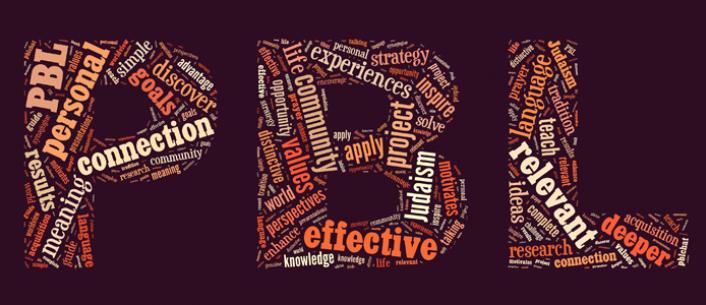- Home
- Play & Learn Home
- Online Enrichment
- Experience Modern Israel
- Israel It's Complicated
- Jewish and Me
- Jewish Holidays Jewish Values
- Jewish Values in Genesis and Jewish Values in Exodus
- Min Ha’aretz
- Our Place in the Universe
- Simply Seder
- The Prophets: Speaking Out for Justice
- Making T'filah Meaningful
- Make, Create, Celebrate
- Yom Haatzmaut Resources
- Hebrew Apps
- About The OLC
- What is the OLC?
- Introduction
- Get Started
- Resources
- OLC Content
- Parent Materials
- See My OLC Classes
- Store
Five Lessons for Project Based Learning Success in Your School
Written by Behrman House Staff, 09 of January, 2013
Are you trying to implement project based learning in your school? This year, Behrman House editors are developing materials and lesson plans that can help you incorporate project based learning into almost any subject area and help you enliven Jewish education in your community. PBL is one more effective tool you can use to inspire students and engage them in Judaism not just in the classroom, but throughout their lives.
Here are five lessons to help you get started with PBL. You can dig deeper by reading each accompanying article. Feel free to print the PDFs for distribution, teacher training, or presentations.
1. Understand the goals of PBL and implement the strategy correctly.
from Eight Essential Characteristics of Project Based Learning by Diane Zimmerman
Read online | Download PDF
A common error that minimizes PBL’s effectiveness is to confuse PBL with its older, less effective ancestor, known simply as the “student project.” For a PBL lesson to be effective, students must go beyond the book and work together to research a relevant, real-world problem. It’s up to you to craft a lesson that engages students and motivates them to find personal meaning in the material. It may not be as easy as assigning a simple student project, but the results—a classroom full of students who not only know the material, but also feel a personal connection to it and apply it to their lives—will be worth your time and effort.
2. Use PBL to demonstrate that Judaism is relevant to every aspect of your students’ lives.
from A Rationale for Using Project Based Learning in the Jewish Classroom by Mark H. Levine
Read online | Download PDF
Jewish education is not just about the one-time b’nai mitzvah experience, although trends in supplementary Jewish education might indicate the contrary. Educators must shift perspectives to help students craft a distinctive worldview and discover meaning in life through the values, rituals, language, and sacred texts of the Jewish tradition. PBL gives students the opportunity to apply the knowledge and skills learned in class to solve genuine problems outside the classroom/synagogue, thus demonstrating Judaism’s relevance in daily life.
3. Use PBL to encourage language acquisition in your Hebrew curriculum.
from Project Based Learning and the Hebrew Curriculum by Terry Kaye
Read online | Download PDF
Another trend in supplementary Jewish education is to teach Hebrew as a skill (and often as a prayer skill) rather than for communication. Instead of just learning about Hebrew, challenge your students to complete projects in Hebrew. Terry Kaye offers four project ideas that will enhance your Hebrew curriculum and help students develop a personal connection to the language.
4. Take advantage of the wealth of PBL resources and communities available online.
from Discovering PBL Resources for the Jewish Classroom by Aviva Werner
Read online | Download PDF
There is an entire community of secular and non-secular educators using PBL and reporting their experiences online. Check out the resources that Aviva provides or search for #pblchat on Twitter to see what people are talking about.
5. Just do it!
from Jump Right In: Teaching Jewish Values via Project Based Learning by Dena Neusner
Read online | Download PDF
Take what you’ve just learned from Behrman House and assign a project to yourself: Craft your own PBL lesson and try it out in a classroom! Plunge right in using Dena Neusner’s step-by-step guide with a Jewish values lesson, or search "PBL" in the Resource Libraries to find a free 28-page PBL lesson plan from Babaganewz.
You can find more ideas for adding a PBL component to your classes in the Lesson Plan Manuals for many Behrman House materials, including Building Jewish Identity (grades 3-5), Living Jewish Values (grades 4-6) and Judaism’s Great Debates (grades 6-7).




